Opublikowane na: Mława (mlawa.pl)
Autor: root@npc.pl
Museums, Cultural Institutions
Zawkrzeńska Land Museum 3 Maja St 3
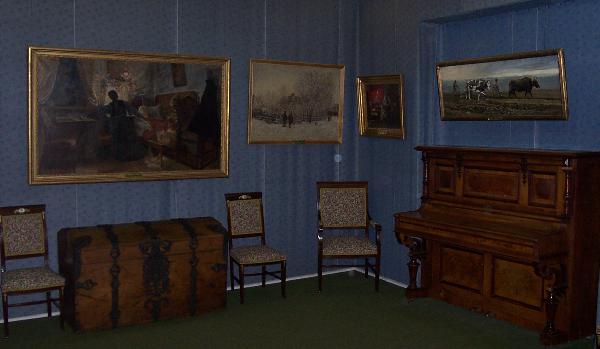 [1]
[1]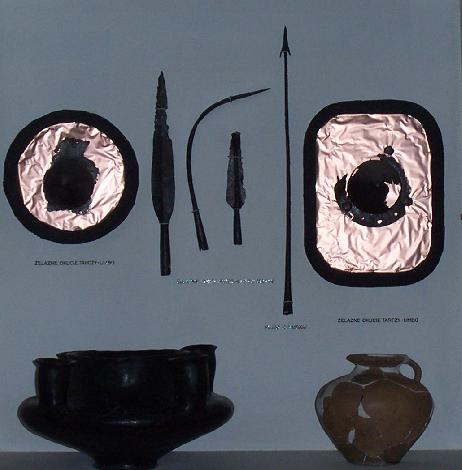 [2]
[2]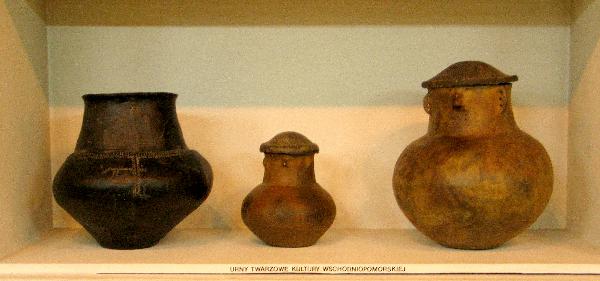 [3]
[3]
| The regional museum in Mława was founded in 1926. The museum was of a local character and with its collection and activities it was connected with the North Mazovia Region. It consisted of five departments: archeological, historical, natural, ethnographic and numismatic. The most active section was the archeological one comprising many historical objects from the Stone Age to the Middle Ages. |
| At the beginning of the war all cultural and educational institutions were liquidated. The collection of the Regional Museum in Mława was taken away to Królewiec. Only a stone pagan deity, stolen by two future partisans, AK members, survived. The deity was hidden in the basement of the Holy Trinity Church in Mlawa where it stayed until the end of the war. Even in 1942 the collection of the Regional Museum of Mława could be sometimes seen by tourists in Królewiec. Later it disappeared without any trace. Just an album with unique pictures of the former museum of Mława was preserved. |
| Since 1 January 1965 the Museum of Zawkrzeńska Land became a national institution and it was dependant on the Regional Museum in Płock. On permanent displays there are currently presented: pre-history of Zawkrzeńska Land from the Stone Age to the Middle Ages, the history of Mława since XVI century until the World War Two with a strong emphasis on 1 September 1939. The historical exhibition is completed by numismatics. |
| To the most interesting historical exhibits belong: a few thousand-year-old stone and horn tools, two-thousand-year-old fully equipped tombs, bronze and metal "jewellery" collection, everyday objects from before the first century and from the next four centuries as well as ancient and medieval weapons. Worth special attention is "duke's" tomb from the first century. This spectacular tomb became a key evidence confirming the existence of a branch of a famous amber route leading from the south of Europe, through Zawkrze, heading north for Sambia. |
| One of the most precious and interesting historical monuments of the next period of our history is a stone pagan deity form Małocin, which was the centre of attention years ago as well as today. It is a rare specimen of early Middle Ages stone sculpture from before the times of Piast dynasty, the only known in Mazovia region and one of few in Poland. |
| The historical part of the Museum encourages to see its collection offering various kinds of exhibits related to the history of Mława and its region. Worth attention are the military objects displayed, guild books, documents granting privileges, seals, commemorative medals and a collection of regiment badges. A specific group of exhibits are those related to the national uprisings, the liberation in 1920 and 1 of September 1929. The collection of paintings includes mostly works of Wojciech Piechowski and his contemporaries. A few dozens of paintings presented on exhibition are mostly from the second half of XIX century and the first years of XX century. It is the only permanent gallery of Piechowski in Poland. The entire exhibition is accompanied by furniture from these times. |
| The world of nature is introduced to us by a permanent exhibition of nature, one of a kind in the North Mazovia Region. The most interesting exhibit of fauna of this part of the exhibition is undoubtedly "a forest elephant", older and bigger than a mammoth living in this area in primeval forests which used to grow here during a warm season between glacial periods thousands of years ago. This spectacular find of this primeval mammal is one of few in Europe and one of three in Poland. |
| In the next part of the nature exhibition you an see a beautiful collection of day and night butterflies, groups of birds and mammals living in their habitats. The most impressive antlers are also on display- including big, multipoint medal antlers of a deer. Particularly worth admiring are aurochs' antlers along with a skull, antlers which are a few hundred years old. |
Juszkiewicz Family Museum 32a Żwirki St
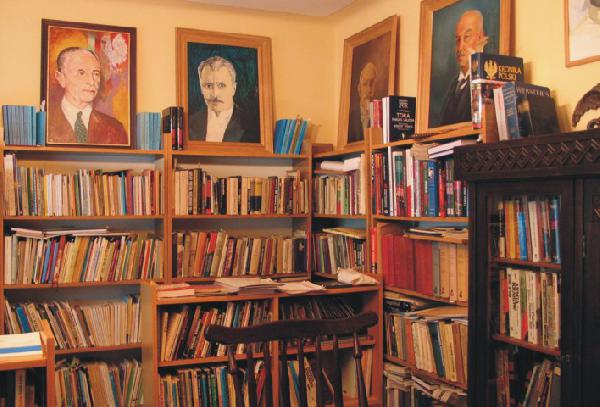 [4]
[4]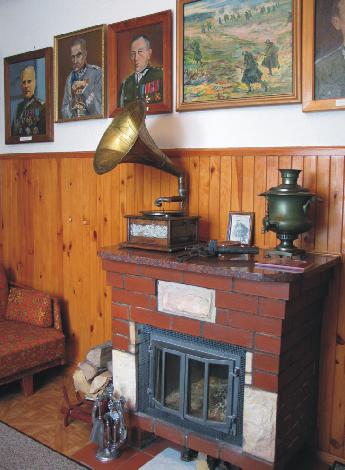 [5]
[5]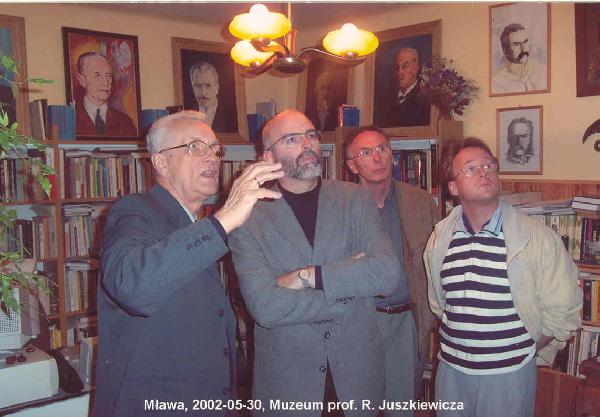 [6]
[6]
| On the day of 20 March 1994 the only one within the Region of Ciechanów and one of few private museums in Poland was opened. The collection in this museum concerns the years 1863- 1995 and is of historical nature. The exhibits were gathered in many different ways: bought at auctions, in section- hand bookstores and thanks to exchanging with other collectors. The collections is presented in a form of successive thematic displays. |
| The library is the biggest part of the museum. It has about six thousand volumes (out of which about one thousand of volumes were published abroad). There are mainly military and historical books in the collection. These include monographies concerning the history of Mława and the North Mazovia Region, historical publications, military publications concerning the times of struggles for independence and scholarly output of professor Juszkiewicz on military and historical subjects. |
| There is a good collection of military objects from the years 1865- 1965. The most impressive exhibit is a tank T- 34 standing in front of the house and a cannon of a German tank called "Tiger". In the museum there are: a heavy machine gun, Russian guns from the fifties, a collection of guns and revolvers from World War One and Two, 84 bayonets (the oldest one from XVII century), side-arms weapons (among others- a sword from XII century found near the village of Wiśniewo and a Lithuanian sword from XV century dug up in Grunwald as well as sabers belonging the cavalrymen from 20 Armoured Division). |
| Deserving a special attention is a collection of portraits of the presidents of Independent Poland. The collection of stamps and commemorative cards printed abroad is also very interesting. |
"Z"Gallery Osiedle Książąt Mazowieckich, pavilion 17a
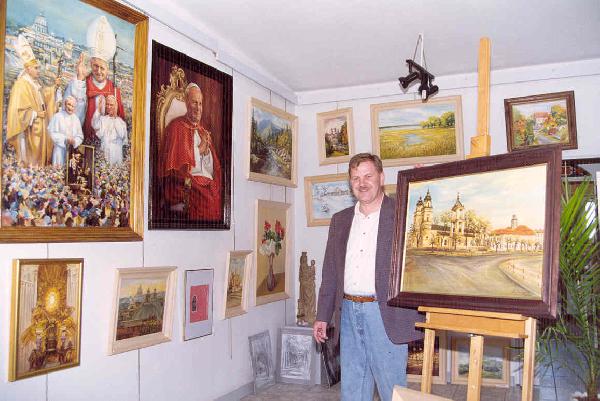 [7]
[7]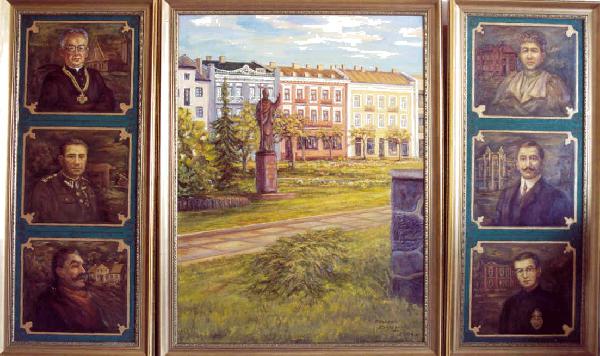 [8]
[8]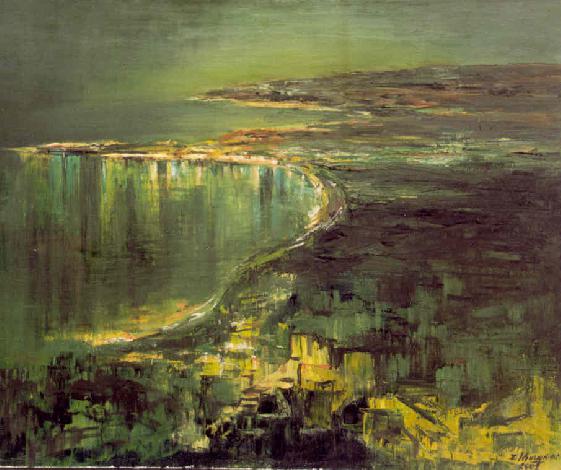 [9]
[9]
"Z' Gallery and at the same time a studio of a well-known painter from Mława- Zdzisław Kruszyński, has existed since 1993. The artist has been a professional easel painter for 20 years already. In his own gallery, you can find paintings, graphics and drawings. Subjects range from landscapes and portraits to still life. He also refers to religious topics. He designed and painted "God's Mother the Queen of Poland" for the main altar of God's Mother Queen of Poland parish church in Mława. His most interesting works include a series of paintings, inspired by an annual contest, entitled "The Citizen of Mława" which has been held since 2000. Since 1990 the artist has been a member of the Artistic Work Club and Society in Ciechanów. His works are on display in the museums in Mława, Bieżuń, Ciechanów, Gołotczyzna and Przasnysz. For many years he has been cooperating with the National Music School in Mława. He also donates some of his works to charity. Among others he took part in charitable auctions for blind children in Artus Court in Gdańsk. He also supports The Great Orchestra of Christmas Charity which is one of the most spectacular charitable actions in contemporary Poland.
Stanisław Herbst Research Institute 3 Narutowicza St
| The Research Institute of Stanisław Herbst has conducted his research activities since 1968. The main tasks of the Institute are connected with gathering scholars, conducting doctoral seminars, organizing a research library as well as monthly meetings with "the people related to science and culture" and publishing a scientific periodical. The Institute had existed until the administration reform in 1975. It was restored in 1996. In the future the Institute is going to undertake more tasks. The tasks will include research in the field of history, ecology and economics concerning the Region and the Province of Mława. There will be activities undertaken to set up the Scholar Society and to publish a monograph of Mława. There were 8 books published during the 8 years of the Research Institute's activity. |
| The Social and Scientific Board of the Institute appoints a council of 5 people, who grant a prestigious and honorary prize of "Mława Citizen of the Year". The prize has been granted since 1999. When considering the choice of candidates to the prize the council takes into account not only candidate's social activities in Mława but also citizens' opinion about a candidate. Until now the below mentioned people got this reward: |
| - In 1999 the prize was given to a canon priest Henryk Lewandowski, a parson of God's Mother Queen of Poland Parish, for unifying the parishioners in a common effort to build a new temple and for his charitable activities. - In 2000 the prize was given to professor Ryszard Juszkiewicz for working on and publishing a number of historical monographs propagating the history of Mława, for initiating veterans' reunions and connecting "Modlin" Army soldiers with Mława Land, as well as for many years of active participation in Friends of Mława Land Society. Professor Juszkiewicz was also involved in creating Stanisław Herbst Research Institute, he initiated building many monuments, commemorative mounds and plaques. - In 2001 the prize was given to Kazimierz Tański for many years of active participation in Friends of Mława Land Society and inspiring the activities aiming at commemorating historical people of merit with monuments and plaques. - In 2002 the prize was given to Irena Wierzbowska for active and voluntary activities for the town of Mława. For many years she has been helping the old and the handicapped. She also brings young people of Polish origin from Belarus to Poland and pays for their accommodation. For many years she used to providing free of charge medical service in Mława's Social Care Centre. Until now she has managed to bring to Poland six families from Kazakhstan. - In 2003 the prize was given to Zbigniew Wawrzyński for many years of engagement in cultural activities in Mława. He is appreciated as a scout movement activist of merit. For his activities he has received a "Cross of Merit". He is recognized as the one who organized many rallies, a co-editor of a numismatics chronicle, an editor of a bi-weekly Mława's magazine, a sensitive photographer and an author of guidebooks of Zawkrzeńska Land. |
| National Archive of Warsaw Department in Mława 3 Narutowicza St |
| The national archive fulfills its statutory tasks as far as gathering, storing, processing and making archival materials available is concerned. It operates in a particular area. Beside that it also supervises archival documentation of national and council department offices, courts and public prosecutors' offices, banks and insurance companies and industrial plants. Archival materials contain documents of historic value connected with various aspects of political, social, economic and cultural life. The department of Mława of The National Archive was founded on 21 July 1950 on the basis of a decree of Ministry of Education as a province department of New Documentation Archive in Warsaw and started operating on 15 November 1950. It operated within the regions of Ciechanów, Mława and Przasnysz. As a seat of the archive a building at 3 Narutowicz St was chosen. On 31 December 2001 the archive's collection consisted of 764 sets, more than 120,000 inventory units and over 1,100 metres of current records. These include archival materials generated between XVII and XX century within the regions of Ciechanów, Działdowo, Mława, Płońsk and Żuromin. The oldest document stored in our archive is dated 1623 and concerns the payment of 4,000 zlotys (for purchasing a property) done by Jan Młocki (master of the Pantry of Płockie Province, the successor of Młock and Wola Młocka) in aid of Ciechanów Monastery of Hermits of Saint Augustyn (by the church of the Blessed Virgin Mary The Mother of God). |
| Between 2001 and 2003 the major renovation of the building located at 3 Narutowicza St was conducted. The building was adapted to become an archive institution. In place of several rooms one spacious room with compact bookshelves was created. The storeroom increased its storing capacity significantly from 1.5 km up to 2.8 km of acts and at the same time it will cater for storing needs for the next 10-15 years. |
| The total cost of renovation along with the cost of the facilities amounted to 1 million PLN and the renovation was financed by the Head Office of National Archives. The city participated paying 100,000 PLN. It is easy to notice an analogy to the situation in 1989 when the Home Office together with the city treasury financed a jail building. |
Public Library of Bolesław Prus in Mława 3 Maja 5 St
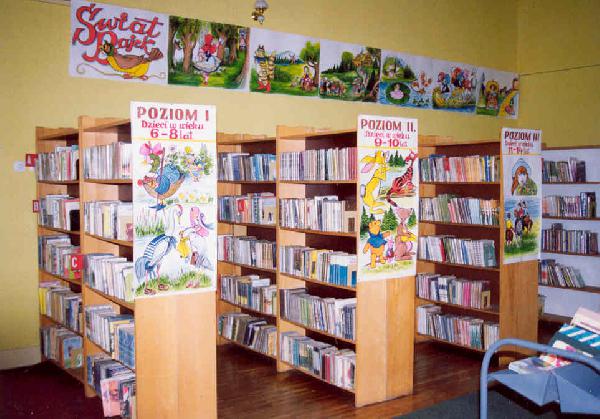 [10]
[10]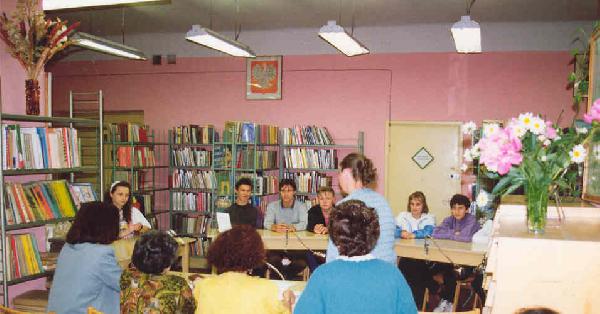 [11]
[11]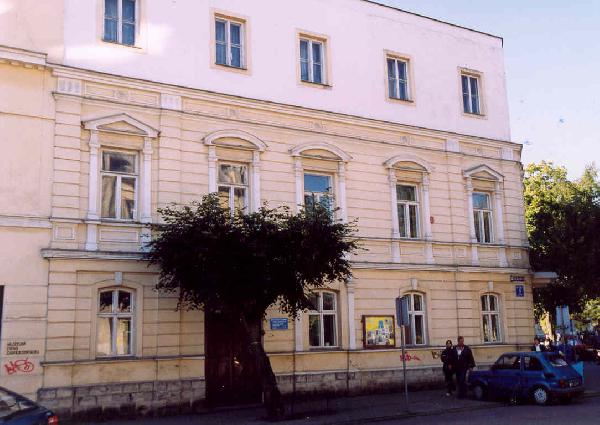 [12]
[12]
The library was founded in 1964 and has a collection of about 94 thousand volumes. It offers the following services to the readers: lending books, reading magazines and materials available on the premises, on request books deliveries for sick or handicapped readers home, loud reading book point, obtaining books from other libraries, audio- visual collection: card index and information- bibliography services. Out of various events organized by the library the most interesting ones are: contests, library lessons for schoolchildren and programmes organized for excursions visiting the library.
Antoni Chmielewski Library 4 Stary Rynek ST It was founded in 1918 by the Common Cooperative of Food Industry (CCFI). In the first years of its activities it was run by volunteers- cooperative employees. In 1932 the library was moved to a bakery on Żwirki St where it remained until the outbreak of World War Two. During the Nazi occupation the collection of books was secured by cooperative employees. In 1946 the library reopened but there were problems with a suitable building for the library. In December 1960 CCFI "Spójnia" gave to use its own building where the library also found its place. The library offers: fiction (for adults, teenagers and children), popular science books, dictionaries, encyclopedias and the press. It is the oldest library in Mława. Its collection of books consists of 14 thousand volumes currently. There are about 1,000 regular readers and about 15,000 books borrowed every year.
| Public Vocational College in Ciechanów Institute of Philology and History in Mława 52 Warszawska St |
| The National Vocational College in Ciechanów was created with a decree of Prime Minister from 24 July 2001. The mission of the college is to educate specialists within the offered majors which result from the needs of local labour market and also from general tendencies of Polish, European and world economy. In the college there are three institutes: 1. Health Care Institute with its focus on: - Nursing - Obstetrics 2. Engineering Institute specializing in: - Municipal Engineering - Manufacture Engineering 3. Institute of Philology and History in Mława with its focus on: - Polish Philology with Speech Therapy - History |
| Development strategy of the Institute in Mława includes starting a new major- Animation of Culture (if Ministry of Education and Sport gives its consent). In the academic year of 2003/ 2004 further modernization of the newly redecorated building of the Institute was started. A new wing of the building is planned which would house 15 students' classrooms, students' dormitory with a canteen and a students' club. A new sports hall is going to be built in 2006 and the surrounding green area is going to be adapted. All that will form an academic campus. |
| Public Music School of the First and Second Degree 43 Sienkiewicz St |
| The Public Music School in Mława was founded in 1975. It was then just a primary school of the first degree. Since 1986 in recognition of its achievements it became a public school of the second degree. At the beginning the school was located in a small pre-war building. Struggling with housing problems it used the classrooms of the nearby primary schools and some private buildings. At last at the beginning of the nineties a new school building was given for use (1992) along with a concert hall (1993). |
| Currently in the Public Music School in Mława students can join: 1. Vocal Faculty of solo singing 2. Instrumental Faculty of the following instruments: violin, viola, guitar, piano, organ, accordion., clarinet, saxophone, flute, trombone and drums. |
| Because of financial reasons there are fewer than 200 students but the capacity of the school is much higher. From the very beginning the school has taken part in the local social life, enriching various local, district and regional ceremonies. Over there one of the biggest accordion festivals in Poland has been organized since 1995 as well as less known violin and piano contests. |
| The students of Public Music School in Mława are successful on stage. So far the most successful has been the accordion class: one of the largest and best in Poland. There is also a choir and an accordion orchestra. Among its members there are prizewinners of almost all national and many international competitions. Worth mentioning is also the grand piano class with prizewinners in competitions for schools of the first and the second degree and the solo singing class. |
| The graduates of Mława music school continue their education at Music Academies in Bydgoszcz, Gdańsk, Katowice and Warsaw. The hope of the Public Music School of Mława for further successes of its students on stage and for developing cooperation with other cultural and educational centers in Poland and abroad is justified. |
| Mława's Narrow -Gauge Railway 4 Bracka St |
| Alike many other narrow- gauge railways of Polish National Railways (PKP) its history goes back to the war period. Its route started to be marked out in July 1915. Just on the next day special German military units started to build a reloading station in Mława. Already in July it was possible to get to Przasnysz with the railway built on spans of 600mm of width. At that time German- Russian front moved slightly towards the East. The order to lengthen the route was issued. At the end of August it went as far as Pasieki- a stop on the way from Wyszków to Ostrołęka. |
| The Ministry of Railroads overtook the gauge- narrow railway on 10 July 1920. Some time later on the initiative of the district authorities the track from Ciechanów to Grudusk was built. In Ciechanów there was a connection point with a regular railway. In that place a steam engine station was also built. At the turn of the forties and the fifties Mława's railway overtook the parts of tracks originally belonging to sugar factories of "Krasiniec" and "Ciechanów". Passenger trains went at that time from Mława to Zamość Mazowiecki and from Ciechanów to Grudusk and Krasne. Between 1961 and 1962 the 600mm tracks were changed to 750mm tracks. The railway served also school trips, missionaries and pilgrims wanting to visit Rostkowo- the home village of Stanisław Kostka. Further history of this railway resembles the history of other narrow- gauge railways. For the last 12 years nobody invested in this railway. Road transport appeared to be a stronger competitor than a narrow-gauge railway. The administrative decision of the Ministry about liquidation of the Management of Access Railway in 2001 meant that Mława's Narrow- Gauge Railway would be liquidated too. On 1 December 2002 PKP handed over the management of the railway to the office of Krasne commune. Krasne signed an agreement with the Foundation in Aid of the Forest Narrow- Gauge Railway in order to start passenger and freight transport. At the moment some activities are undertaken to start transporting pilgrims, tourists and freight. |
| Recurrent Cultural Events |
| Most cultural events that take place in Mława are organized on a local or district level. To few national events organized belong: Inter- Parish Sport Club and National Zawkrzeńska Land Bicycle Rally. |
| Among regional cultural events special attention deserve the following ones organized by the Community Centre of Mława: |
- District Dancing Contest (as a part of Dance Groups Festival) - District Youth Music Groups Festival - District Children Song Festival "Sing With Us" - Regional School Amateur Theatres Festival - Regional Recitation Contest for Children "One Poem Theatre" - International Day of Theatre- regional qualifications to national Recitation Contest - Regional Religious Songs Competition - Week of Christian Culture - Good Shepherd Fete - National Festival of Rock Bands "Rockowania" - Mazovia Song Festival - Mazovia Dancing Confrontations - Mazovia Festival of Polish Song - Mazovia Poetic Confrontations "Trust The Word" |
| Every year at the turn of May and June there are Days of Mława organized with the help of Mława's City Hall. This is a series of various events including many cultural events such as : public lectures, exhibitions, concerts and sport events |
Adres źródłowy: https://mlawa.pl/artykul/museums-cultural-institutions